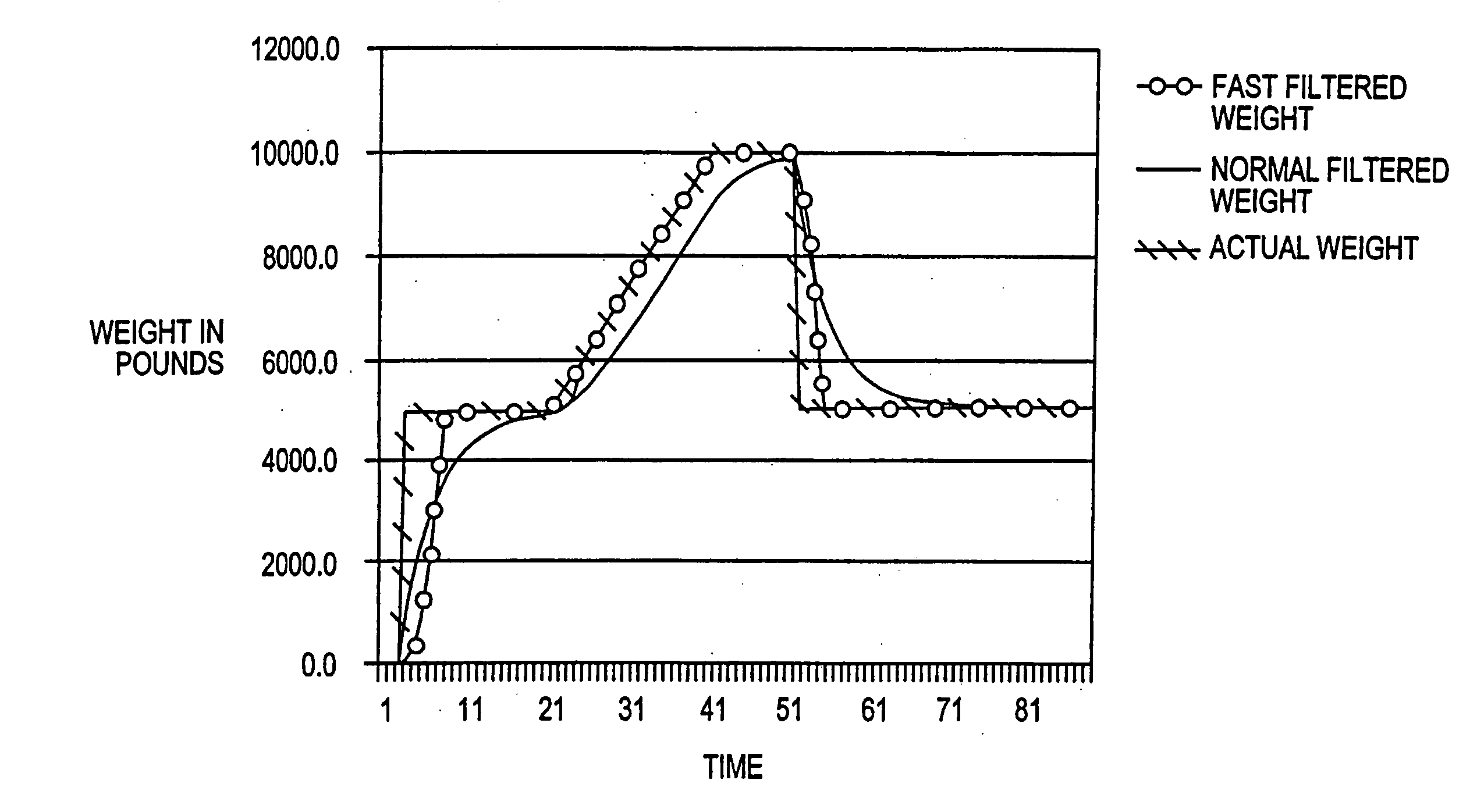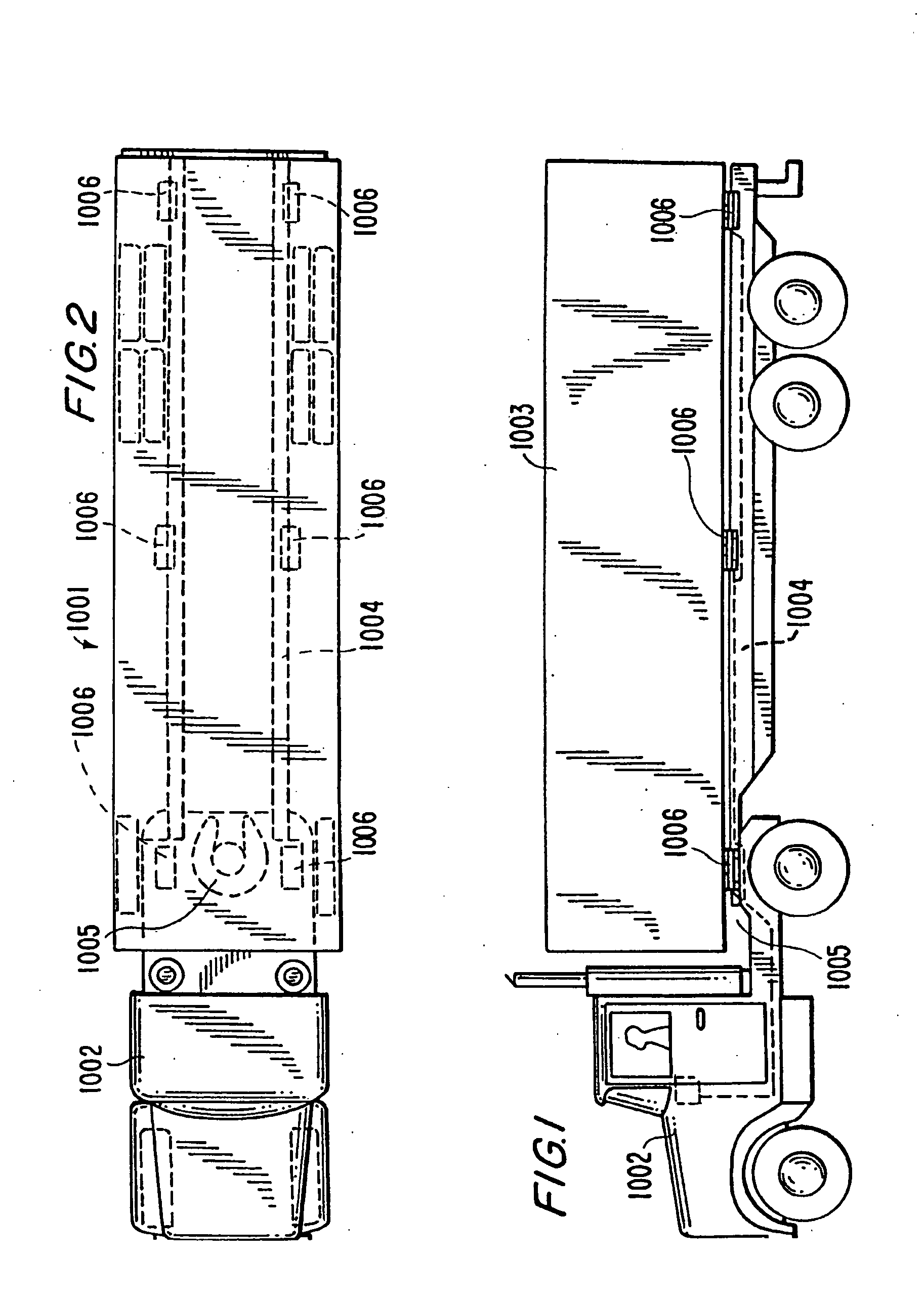Load cells for use in high precision load measuring system
a load cell and high-precision technology, applied in the field of vehicle load weighing systems, can solve the problems of system insufficient accuracy or precision, analog signal that represents weight is subject to loss and noise, and cannot be used for customer billing, etc., to achieve the effect of reducing the deleterious effects of mechanical and electrical noise on the measured weigh
- Summary
- Abstract
- Description
- Claims
- Application Information
AI Technical Summary
Benefits of technology
Problems solved by technology
Method used
Image
Examples
first embodiment
[0089] The mounting arrangement of a typical load cell of the first embodiment is summarized as follows and described in detail thereafter. FIG. 3B shows schematically how an elongated load cell 1006 is situated with its ends upon longitudinally spaced right angle support brackets or coupling means 1010A and 1010B. The load cell's top surface midway between these support brackets is engaged by the bottom 1025A of block or coupling means 1025 welded to the bottom of container 1003. From this arrangement there is a downward force F1 at the center and upward reaction forces F2 and F3 at the supports 1010A and 1010B respectively. Midway between forces F1 and F2 is a set 1051 of strain gauges, and midway between forces F1 and F3 is an identical set 1051 of strain gauges. Each set of strain gauges is adhered to the back wall of a recess which extends inwardly from the front wall of the load cell block. As explained later, for each recess there is an opposite recess extending inwardly from...
second embodiment
[0098] As seen in FIGS. 9 and 11 of this second embodiment, the center of the load cell block 1006A is fixedly mounted to central bracket 1075 by bolt 1076. In this reversed mode the load cell's central contact area 1029 between the notches 1030 faced downward against the corresponding contact area of central support bracket 1075.
Mounting of Sets of Strain Gauges in the Load Cell
[0099] In each load cell the strain gauges are mounted in sets of four as seen in FIGS. 3, 3A and 9. As shown in FIG. 3A, each load cell has two rectangular recesses 1050 extending horizontally inward. In each recess is situated one set of strain gauges 1051 mounted to a plate 1052. As noted earlier, for each recess extending inwardly on one side of the load cell, there is an identical recess extend inwardly from the opposite side. Both recesses extending inwardly, toward but not reaching the other, because of a central web or internal wall that extends vertically and in the front-to-rear direction. One set...
PUM
 Login to view more
Login to view more Abstract
Description
Claims
Application Information
 Login to view more
Login to view more - R&D Engineer
- R&D Manager
- IP Professional
- Industry Leading Data Capabilities
- Powerful AI technology
- Patent DNA Extraction
Browse by: Latest US Patents, China's latest patents, Technical Efficacy Thesaurus, Application Domain, Technology Topic.
© 2024 PatSnap. All rights reserved.Legal|Privacy policy|Modern Slavery Act Transparency Statement|Sitemap



